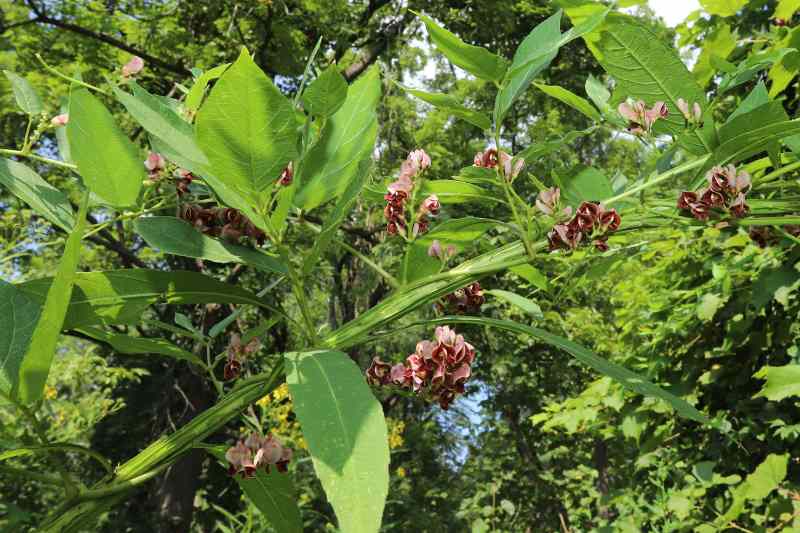Tuberous wisteria Apios americana, also known as Apios americana, is a climbing plant native to North America. Valued for its pretty flowers and edible tubercles, it is often grown for its ornamental appearance. In cooking, the tubercles of tuberous wisteria are a real treasure: rich in protein and nutrients, they offer a sweet flavour and a texture reminiscent of potato.
Growing tuberous wisteria in your garden
Growing tuberous wisteria is relatively simple. This plant prefers moist, well-drained soil and a sunny or partially shaded position. It can be planted in spring by burying the tubercles a few centimetres deep. Tuberous wisteria is hardy and copes well with cold, making it an ideal choice for temperate gardens. Its growth is rapid, and it can reach several metres high, therefore requiring support to climb.
However, you will need to wait at least 2 to 3 years after planting your Apios before you can start to harvest your tubercles year-round depending on your needs. The tubercles of this “string potato” keep for only a few weeks in a cool place. So, eat them as soon as possible!
Did you know? : Tuberous wisteria can also be called American groundnut, potato bean, string potato or potato-bean.

Harvesting and storing the tubercles
- Harvest period : The tubercles of tuberous wisteria are generally ready to be harvested in autumn, after foliage has yellowed and wilted. This indicates the plant has finished its growth cycle.
- Dig up with care : Use a digging fork to lift the tubercles. Carefully loosen soil around the base of the plant, taking care not to damage the tubercles. They are often connected by underground cords and can be spread over a fairly large area.
- Selecting tubercles : Choose firm tubercles without signs of rot or damage. Small tubercles can be replanted to encourage growth of new plants the following year.
To store tubercles properly, start by cleaning them by brushing gently to remove soil. Avoid washing them with water, as moisture can encourage rot during storage. Then leave the tubercles to air-dry for a few days in a cool, dry place.
Store tubercles in a cool, dark and well-ventilated place, such as a cellar or larder. You can wrap them in newspaper or place them in boxes of sand or turf to keep them cool and reduce moisture loss. Finally, check tubercles regularly during winter to ensure they are not drying out and show no signs of rot. Remove damaged tubercles immediately to prevent rot from spreading.
What is the yield of tuberous wisteria?
A single young plant of tuberous wisteria can produce several kilos of tubercles in one growing season. In optimal conditions, some young plants can produce up to 5 kilos or more. However, results may vary considerably depending on environment and care given to the plant.
To obtain a harvest of several kilos per year, it is recommended to plant several young plants of tuberous wisteria. By planting about 3 to 5 young plants, you could expect a generous harvest, especially if plants are well tended and growth conditions are favourable.
Cooking tuberous wisteria: a world of possibilities
The tubercles of tuberous wisteria can be used in many ways in cooking. They are excellent boiled, fried, or even mashed. Their delicate taste pairs well with many flavours, from herbs to spices. Rich in fibre and protein, they provide an excellent alternative to potatoes and other more common tubercles.
Recipe: tuberous wisteria purée with garlic and herbs
Ingredients :
- 500 g tubercles of tuberous wisteria
- 2 pods of garlic
- 1 bunch of fresh herbs (parsley, chives, thyme)
- Olive oil
- Salt and pepper
Preparation :
- Wash and peel the tubercles of tuberous wisteria.
- Cut into pieces and cook in boiling salted water until tender.
- Drain the tubercles and mash into a purée.
- Add crushed garlic, finely chopped herbs, a drizzle of olive oil, salt and pepper.
- Mix well and serve hot.
































Comments